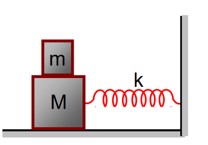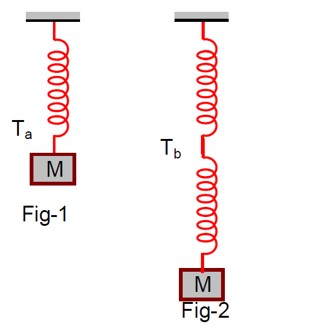14.25 A mass attached to a spring is free to oscillate, with angular velocity , in a horizontal plane without friction or damping. It is pulled to a distance and pushed towards the centre with a velocity at time t = 0. Determine the amplitude of the resulting oscillations in terms of the parameters and .
[Hint : Start with the equation x = a cos ( t + ) and note that the initial velocity is negative.]
14.25 A mass attached to a spring is free to oscillate, with angular velocity , in a horizontal plane without friction or damping. It is pulled to a distance and pushed towards the centre with a velocity at time t = 0. Determine the amplitude of the resulting oscillations in terms of the parameters and .
[Hint : Start with the equation x = a cos ( t + ) and note that the initial velocity is negative.]
-
1 Answer
-
The displacement equation for an oscillating mass is given by : x = Acos ( , where
A = the amplitude
x = the displacement
Velocity, V = = -A t +
At t = 0, x = , = ….(i)
And = = A …….(ii)
Squaring and adding, we get
, A =
Similar Questions for you
Velocity of block in equilibrium, in first case,
Velocity of block in equilibrium, is second case,
From conservation of momentum,
Mv = (M + m) v’
f? = 300 Hz
3rd overtone = 7f? = 2100 Hz
Kindly consider the following figure
K = U
½ mω² (A² - x²) = ½ mω²x²
A² - x² = x²
A² = 2x²
x = ± A/√2
Taking an Exam? Selecting a College?
Get authentic answers from experts, students and alumni that you won't find anywhere else
Sign Up on ShikshaOn Shiksha, get access to
- 65k Colleges
- 1.2k Exams
- 679k Reviews
- 1800k Answers


